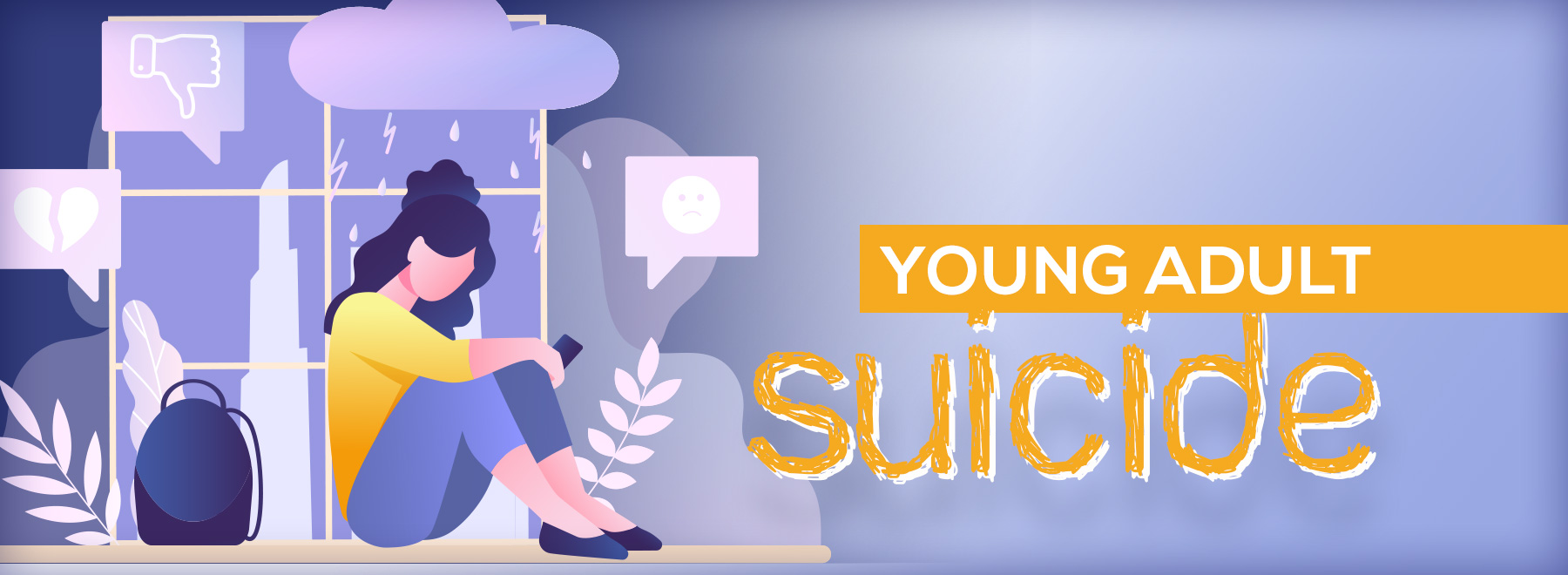Heed warning signs, seek treatment to recover from suicidal thoughts
A 30-year-old former Miss USA.
A 26-year-old just days from launching his music career.
A growing list of 20-something professionals, entrepreneurs, students, social media influencers.
And, odds are, a young adult you knew.
They are all members of an unenviable club: They died by suicide. And they are part of a national trend.
According to the Centers for Disease Control and Prevention, the suicide rate for those 15 to 44 has increased over the last decade. The biggest surge has been in the 25 to 34 age group, particularly in the last few years, making it the leading cause of death after unintentional injuries.
But why, when in the prime of one’s life? Former Miss USA Cheslie Kryst, an attorney, was making a name for herself, interviewing A-list celebrities and taking on acting roles, while Ian Alexander Jr., the son of actress Regina King, was awaiting the release of his debut album.
The pandemic connection

“I have observed an increase in young adults reporting distress and impairment related to mood and anxiety disorders, particularly since the start of the pandemic,” said Dr. Matthew Morris, associate professor of psychology. “During this time, I have also observed an increase in rates of both passive – ‘I wish I could go to sleep and not wake up’ – and more active suicidal thoughts.”

Dr. Nick McAfee, co-director of the Student Counseling and Wellness Center and director of mental health for TEAM Clinic, said research he has conducted with other UMMC faculty indicates Mississippi university students are experiencing similar levels of suicidal ideation reported in national trends, which he suspects, like Morris, are influenced by two years of disrupted classroom instruction, isolation from peers and a lingering unease about the future.
Pandemic aside, Morris said there is a significant increase in rates of suicidal ideation and depression beginning during puberty i and continuing into adulthood.
As young adults experience significant changes in identity formation, independence, intimate relationships, academic and peer-related stressors, their risk for suicidal thoughts and behaviors increases. Those who identify as LGBTQ+ are at an even greater risk.
“In general, people in this stage of life are going through multiple transitional stressors over the course of only a few years -- starting and graduating college, living away from parents, and finding a job,” said McAfee, also assistant professor, Division of Psychology, Department of Psychiatry and Human Behavior.
The social connection
There’s also a social media connection. Research suggests that as social media use increases in young adults, so do symptoms of depression and anxiety. Young women are particularly at risk to its effects.
“One likely culprit is what is known as upward social comparison,” McAfee explained. “When you scroll though social media, you are inundated with posts from individuals portraying themselves in a positive light. This makes it easy to make the interpretation ‘everyone is doing better than I am,’ which leads to a lower sense of self-esteem.”
Morris said it’s important to remember that people are not always doing as well as they seem.
“Success and admiration are not protective factors against suicide risk, and many of those who suffer learn to wear masks,” Morris said.
Also, you don’t need a social media presence to be at risk for upward social comparison.
Social anxiety may increase the risk for suicidal thoughts and behaviors by making it more difficult to form and navigate interpersonal relationships, which can contribute to loneliness, a feeling of not belonging, and peer victimization, said Morris.
“Difficulty regulating emotions – common to both mood and anxiety disorders – has also been proposed as a risk factor for suicidal thoughts and behaviors,” Morris explained. “A common reason given for suicide attempts is seeking relief or escape from heightened distress. Both mood and anxiety disorders are characterized by significant distress.”
When to seek help
Of course, not everyone who experiences stress, anxiety, or mood disorders is at risk of suicide. It’s also true that not everyone who has thoughts of suicide will act on them.
Sometimes those thoughts are sporadic, while other times they are connected to a specific mental health concern, such as depression, said McAfee.
“Anxiety and mood disturbances exist on a continuum,” explained Morris. “On one end, there are daily fluctuations that we all experience.”
Those normal, or common occurrences, typically result from isolated challenging events and resolve on their own.
McAfee said that in those instances, protective factors such as seeking social support from family and friends and engaging in meaningful activities can help reduce the likelihood of the thoughts returning.
It is when suicidal thoughts endure, start to affect one’s self-care routine and create problems (at work, home, school, or in relationships), that one should seek help from a mental health provider.
Suicide warning signs to watch for, according to the CDC, include:
- feeling like a burden
- being isolated
- increased anxiety
- feeling trapped or in unbearable pain
- increased substance use
- looking for a way to access lethal means
- increased anger or rage
- extreme mood swings
- expressing hopelessness
- sleeping too little or too much
- talking or posting about wanting to die, and
- making plans for suicide.
Though some of these symptoms, on their own, can be indicative of other issues, they should not be ignored, said McAfee.
To the CDC warning signs, he adds the following:
- taking steps to put affairs in order, such as making a will
- giving away valued possessions, and
- sharing feelings of strong guilt or shame.
“Reaching out for help ideally should happen before things become unmanageable,” said Morris. “People often wait too long to see if their problems will resolve without need for treatment. One reason is the stigma surrounding mental health care.”
How to help yourself or a loved one
To prevent delays in treatment, Morris recommends going through your insurance provider to identify mental health professionals nearby who are covered. Another way is to reach out to your primary care provider. The Substance Abuse and Mental Health Services Administration Treatment Referral Helpline provides a treatment services locator. You can also call SAMHSA at 1-800-662-4357.
If you don’t feel you’re ready for therapy, McAfee suggests two free options: Calling the National Suicide Lifeline at 1-800-273-8255 or texting the Crisis Text Line at 741-741.
Contrary to what some may believe, there’s nothing taboo about asking if someone has contemplated suicide.
Said Morris: “The research is very clear: Asking does not cause or worsen suicidal thoughts and behaviors. Asking can initiate a conversation that could help a loved one seek the treatment they need. If your loved one tells you they are actively suicidal – that they are going to do something in the immediate future – stay with them and either call 911 or accompany them to the nearest emergency room for an evaluation.”
With treatment, you, or someone you love, can get better.
The above article appears in CONSULT, UMMC’s monthly e-newsletter sharing news about cutting-edge clinical and health science education advances and innovative biomedical research at the Medical Center and giving you tips and suggestions on how you and the people you love can live a healthier life. Click here and enter your email address to receive CONSULT free of charge. You may cancel at any time.



